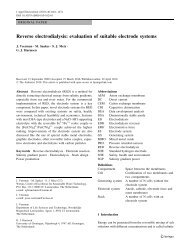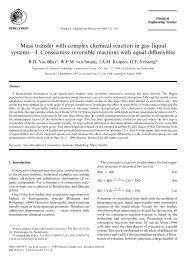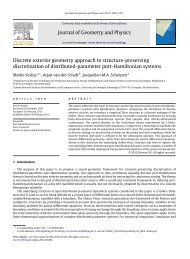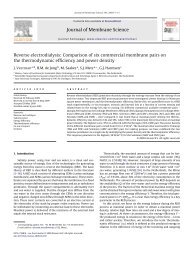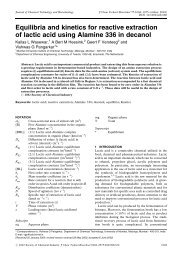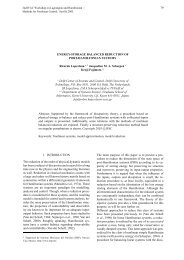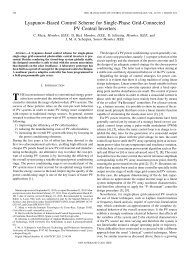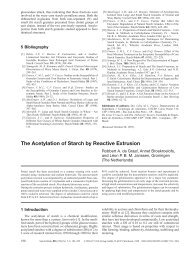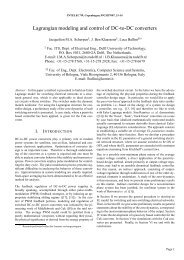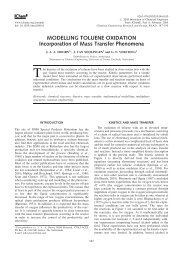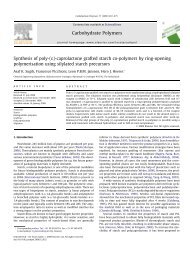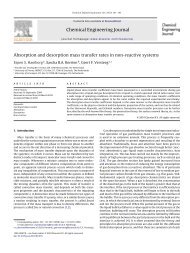FUZZY CLUSTERING, GENETIC ALGORITHMS AND NEURO ... - ITM
FUZZY CLUSTERING, GENETIC ALGORITHMS AND NEURO ... - ITM
FUZZY CLUSTERING, GENETIC ALGORITHMS AND NEURO ... - ITM
You also want an ePaper? Increase the reach of your titles
YUMPU automatically turns print PDFs into web optimized ePapers that Google loves.
600 P.F. VAN LITH et al.<br />
Downloaded by [University of Groningen] at 04:43 19 September 2012<br />
occur, although this depends on the quality of the fuzzy logic submodel.<br />
In the parallel approach, the outputs of the fuzzy logic block and<br />
the physical model are combined to determine the total model output<br />
(Fig. 1). The model serves as a best estimate of the process. The<br />
fuzzy logic submodel is implemented such, that it is able to compensate<br />
for any discrepancy between the prior model output and real world<br />
values. A disadvantage of this approach is that desired behavior is<br />
not guaranteed.<br />
Research in this area has, until now, focused on Artificial Neural<br />
Networks (ANNs) as the black box modeling technique. In the context<br />
of modeling chemical processes, however, it is proposed to use fuzzy<br />
logic, as mentioned above, because fuzzy logic is capable of capturing<br />
data as well as human experience, can deal with uncertainty and can<br />
usually be interpreted physically.<br />
If first principles models are preferred over black box models, it<br />
is proposed to leave the physical model structure intact as far as possible<br />
and only model those phenomena about which uncertainty<br />
exists with fuzzy submodels. The physical model structure is formed<br />
by mass and energy balances, while the fuzzy submodel(s) describe<br />
production rates, heat and mass transfer, equilibria or growth rates,<br />
or any additional equation, if required. This way, hybrid fuzzy-first<br />
principles are obtained which combine a high level of interpretability<br />
with the expectation of good extrapolating properties. Therefore,<br />
in this research, a serial semiparametric modeling approach is used.<br />
3. PROCEDURE<br />
The procedure for constructing a hybrid model from process data is<br />
straightforward and can be formulated as:<br />
1. Establish the physical framework of the hybrid model, by determining<br />
for which relations uncertainty is present, while leaving the<br />
accumulation balance structure intact.<br />
2. Acquire input–output process data about uncertain relations (by<br />
estimation, if required).<br />
3. Identify the fuzzy submodel(s) for these uncertain relations, using<br />
the acquired input–output data.



